"I would rather have one article a day of this sort; and these ten or twenty lines might readily represent a whole day's hard work in the way of concentrated, intense thinking and revision, polish of style, weighing of words." -Joseph Pulitzer
When it comes to the Messier objects, though, it isn't words that get concentrated; its collections of stars, gas, dust and more! So welcome to another edition of Messier Monday, where we take an in-depth look at one of the 110 deep-sky objects that make up the Messier catalogue. Some of these objects are only a few light-years wide, containing just a few solar masses worth of material, while others extend for hundreds of thousands of light years, containing more than a trillion stars.
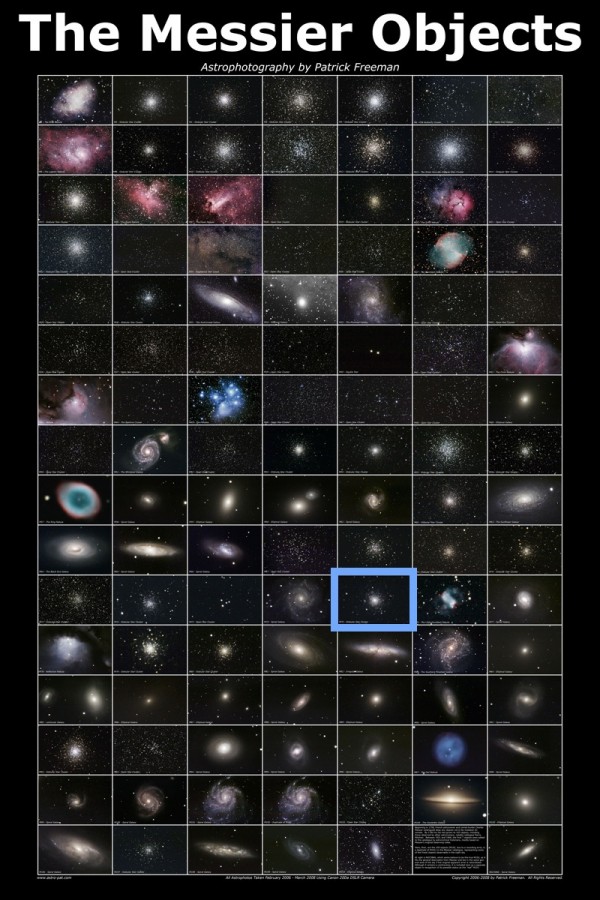 Image credit: © 2008 by Patrick Freeman, via http://www.astro-pat.com/.
Image credit: © 2008 by Patrick Freeman, via http://www.astro-pat.com/.
Tonight, like all nights where the Moon will shine prominently, open clusters and globular clusters make for the best observing targets, while extended objects like galaxies and nebulae are better viewed under darker, moonless skies. High in the southern skies after tonight's sunset, you may want to consider checking out the 75th entry in Messier's catalogue, the most centrally concentrated of all 29 of the Messier globular clusters.
To find it, you'll have to look in a region of the sky without bright, prominent stars. The plane of the galaxy runs through the Summer Triangle, whose vertex Altair is visible at the top of the image, above, and extends all the way down to the asterism of the Teapot in Sagittarius, located right at the horizon (at my latitude). If you take those two points and the bright star Fomalhaut in the southeast, you can make a huge triangle; Messier 75 is located just south of the exact middle, but there are some closer stars to help you along the way.
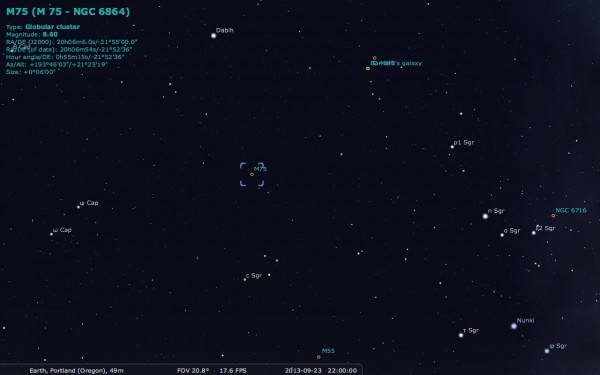 Image credit: me, using the free software Stellarium, available at http://stellarium.org/.
Image credit: me, using the free software Stellarium, available at http://stellarium.org/.
In particular, you can find the bright star Dabih (β Capricorni) by heading south from Altair, and the "banana" of six stars to the west, located just north of the teapot in Sagittarius. To the east, two fainter but still prominent stars (ψ Capricorni and ω Capricorni) can be seen, while to the south, four naked eye stars making a small "hook" shape can be viewed. And in the midst of all of them, located by a series of stars just barely at the limit of naked eye vision, you can find -- through binoculars or a telescope -- the deep-sky sight of Messier 75.
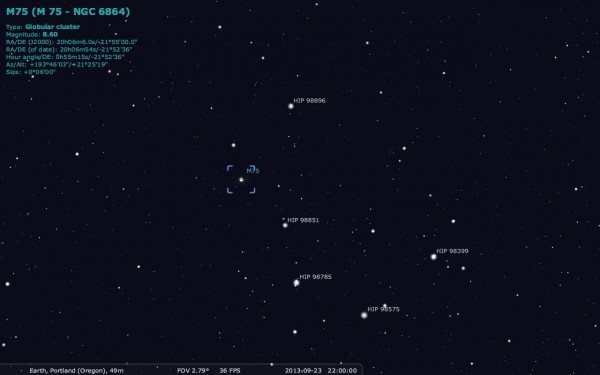 Image credit: me, using the free software Stellarium, via http://stellarium.org/.
Image credit: me, using the free software Stellarium, via http://stellarium.org/.
It appears as a dense, small round nebula, in which it's very difficult to resolve individual stars. Messier's assistant Pierre Méchain discovered Messier 75 in 1780, and other than a dense, round core, neither Messier nor Méchain could see any more detail.
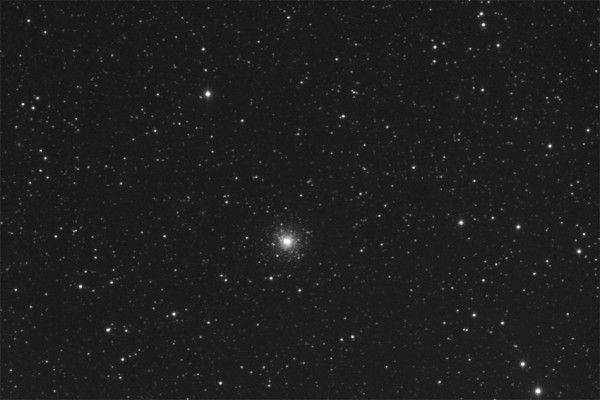 Image credit: The Basden Family, via http://www.basdenfamily.com/.
Image credit: The Basden Family, via http://www.basdenfamily.com/.
But with good skies and modest equipment, you can see that there isn't just a dense, round core, but individual stars radiating outwards, and eventually fading into the blackness of the space surrounding it.
What makes this cluster's core appear so dense, and what makes its outskirts appear so dim?
Why, the fact that this cluster is tremendously far away! Like most globulars, it's located out of the galactic plane, but it's clear on the far side of the galaxy from our perspective! While the galaxy's center is some 25,000 light-years distant, M75 is some 67,000 light-years away, making it the second most distant globular in the Messier catalogue!
But while there's a wide range of densities (from class I to class XII) among globular clusters -- some globulars are more dense towards the core while others are more diffuse -- Messier 75 is as dense as they come!
The prototype for Class I globulars, Messier 75 is some 67 light-years in radius (compared to its 67,000 light-year distance), and shines with the brightness of 180,000 suns! Despite being nearly as old as the Universe itself -- its estimated that Messier 75 was formed less than a billion years after the Big Bang -- there are many blue and bright yellow-and-red stars inside!
The bright yellowish stars are red giants, or stars burning through the last of their nuclear fuel at the ends of their lives, while the bright blue ones are predominantly blue stragglers (more abundant towards the core), where lower mass stars have merged together to burn brighter (and bluer, and faster) than either progenitor star ever did.
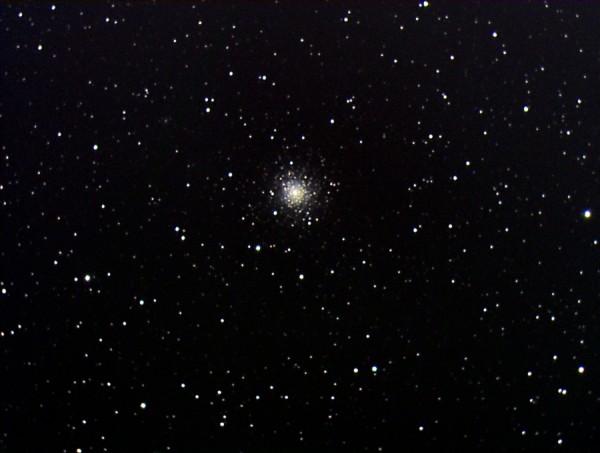 Image credit: Jim Mazur's Astrophotography at Skyledge, via http://www.skyledge.net/.
Image credit: Jim Mazur's Astrophotography at Skyledge, via http://www.skyledge.net/.
While Messier 75 may be a difficult object to find without spectacular equipment, you're looking not just to the other side of our galaxy when you capture it; you're also looking way back in time, at stars nearly three times as old as our Sun! So don't despair if it looks small, and if it's hard to find; you're not alone!
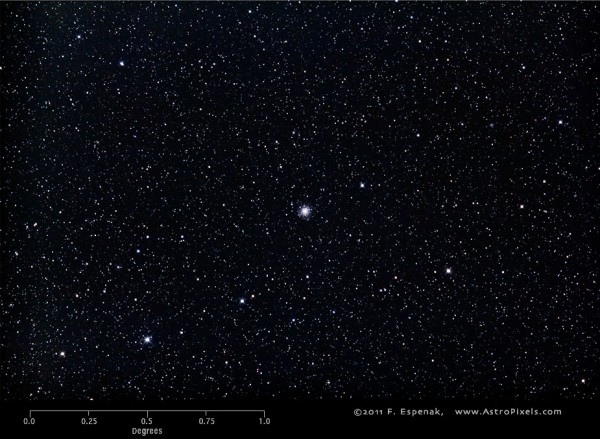 Image credit: Fred Espenak of http://astropixels.com/.
Image credit: Fred Espenak of http://astropixels.com/.
Instead, think about just what can be seen, inside, with the most powerful of telescopes: Hubble!
And if you want to take a ride all the way through the core of the cluster itself... well, I can't think of a reason why you wouldn't, so let's go!
And that's what the inside of the densest of all globular clusters -- from nearly a galaxy-length away -- looks like! There's no better way to wrap up a Messier Monday! Including today’s entry, we’ve taken a look at the following Messier objects:
- M1, The Crab Nebula: October 22, 2012
- M2, Messier’s First Globular Cluster: June 17, 2013
- M5, A Hyper-Smooth Globular Cluster: May 20, 2013
- M7, The Most Southerly Messier Object: July 8, 2013
- M8, The Lagoon Nebula: November 5, 2012
- M11, The Wild Duck Cluster: September 9, 2013
- M12, The Top-Heavy Gumball Globular: August 26, 2013
- M13, The Great Globular Cluster in Hercules: December 31, 2012
- M15, An Ancient Globular Cluster: November 12, 2012
- M18, A Well-Hidden, Young Star Cluster: August 5, 2013
- M20, The Youngest Star-Forming Region, The Trifid Nebula: May 6, 2013
- M21, A Baby Open Cluster in the Galactic Plane: June 24, 2013
- M25, A Dusty Open Cluster for Everyone: April 8, 2013
- M29, A Young Open Cluster in the Summer Triangle: June 3, 2013
- M30, A Straggling Globular Cluster: November 26, 2012
- M31, Andromeda, the Object that Opened Up the Universe: September 2, 2013
- M33, The Triangulum Galaxy: February 25, 2013
- M37, A Rich Open Star Cluster: December 3, 2012
- M38, A Real-Life Pi-in-the-Sky Cluster: April 29, 2013
- M40, Messier’s Greatest Mistake: April 1, 2013
- M41, The Dog Star’s Secret Neighbor: January 7, 2013
- M44, The Beehive Cluster / Praesepe: December 24, 2012
- M45, The Pleiades: October 29, 2012
- M48, A Lost-and-Found Star Cluster: February 11, 2013
- M51, The Whirlpool Galaxy: April 15th, 2013
- M52, A Star Cluster on the Bubble: March 4, 2013
- M53, The Most Northern Galactic Globular: February 18, 2013
- M56, The Methuselah of Messier Objects: August 12, 2013
- M57, The Ring Nebula: July 1, 2013
- M60, The Gateway Galaxy to Virgo: February 4, 2013
- M65, The First Messier Supernova of 2013: March 25, 2013
- M67, Messier’s Oldest Open Cluster: January 14, 2013
- M71, A Very Unusual Globular Cluster: July 15, 2013
- M72, A Diffuse, Distant Globular at the End-of-the-Marathon: March 18, 2013
- M74, The Phantom Galaxy at the Beginning-of-the-Marathon: March 11, 2013
- M75, The Most Concentrated Messier Globular: September 23, 2013
- M78, A Reflection Nebula: December 10, 2012
- M81, Bode’s Galaxy: November 19, 2012
- M82, The Cigar Galaxy: May 13, 2013
- M83, The Southern Pinwheel Galaxy, January 21, 2013
- M86, The Most Blueshifted Messier Object, June 10, 2013
- M92, The Second Greatest Globular in Hercules, April 22, 2013
- M94, A double-ringed mystery galaxy, August 19, 2013
- M97, The Owl Nebula, January 28, 2013
- M99, The Great Pinwheel of Virgo, July 29, 2013
- M102, A Great Galactic Controversy: December 17, 2012
- M103, The Last ‘Original’ Object: September 16, 2013
- M104, The Sombrero Galaxy: May 27, 2013
- M108, A Galactic Sliver in the Big Dipper: July 22, 2013
Come back next week, when the Moon will be down after sunset, and maybe, just maybe, there'll be a great galactic wonder waiting for you next time, only here, only on Messier Monday!
- Log in to post comments

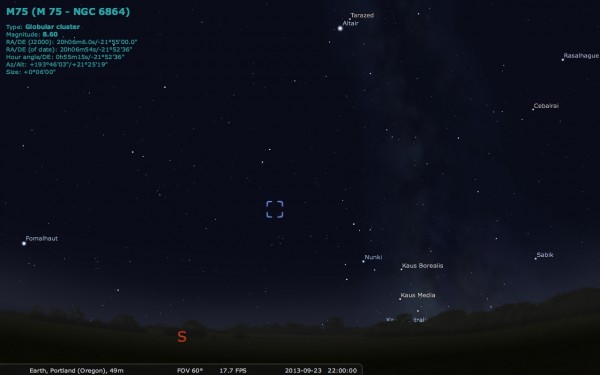
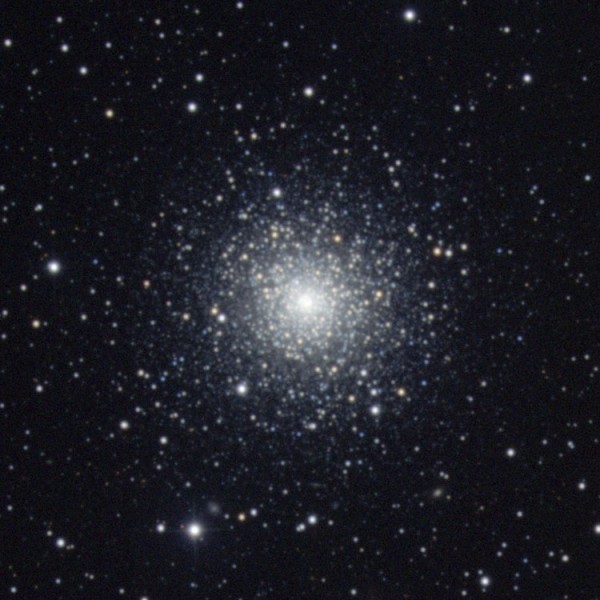
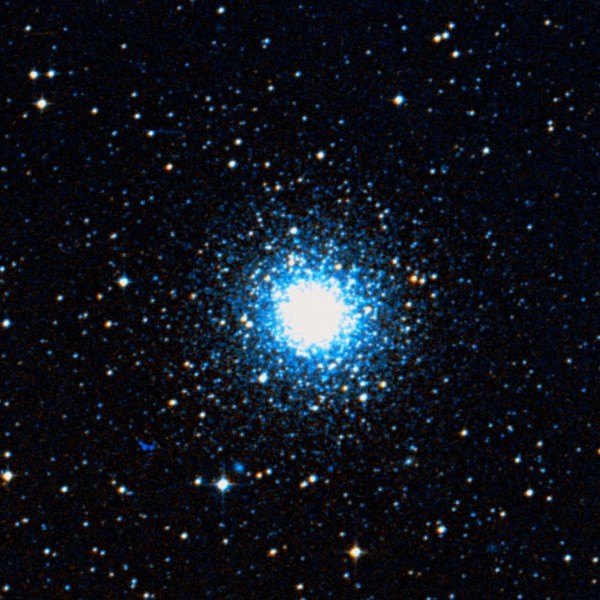
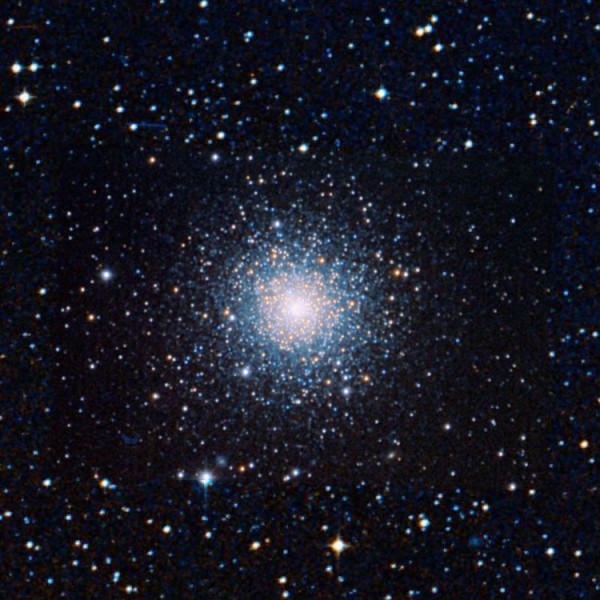
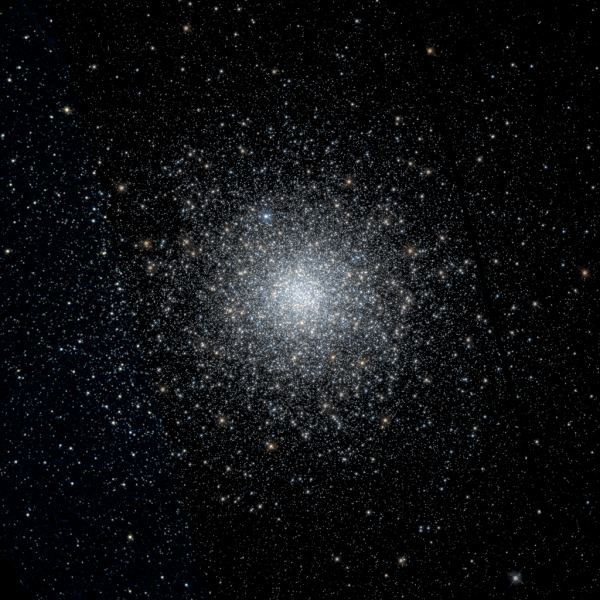

Ethan -
Some time when you are talking about a globular cluster, could you explain what determines the overall density? Is it that the original gas cloud was denser, or larger, or is there dark matter involved? Thanks again.
I love Messier Mondays.
Sometimes I sleep on the roof facing the sky. And thinking of myself why I have born in this Generation.Why wouldn't I have born some 100 or 1000 years back..if i have been born some 1000 years back. i wouldn't know about this greatest invention called internet, mobiles,Television.So what's the purpose I born at this time.And I think earth is not the only planet with living beings.There is some thing else beyond us. LIFE IS SO PRECIOUS each and every seconds are Golden moments of life. FEEL IT!!!
Sorry Ethan, I just read this and realised I don't visit or link to your blog about a fifteenth as much as I should do. I really must remedy that.
Marvellous item & series here - shared - thankyou.
Thank you, StevoR!